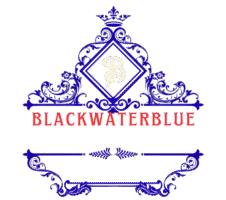Fashion is more than fabric and design—it is a mirror of society. Throughout history, the way people dress has reflected cultural values, social shifts, economic changes, and even political movements. As trends evolve, they often tell deeper stories about the world around us. Fashion serves not only as a creative outlet but also as a powerful communicator of identity, status, and change.
The Connection Between Fashion and Culture
Every culture has its own unique approach to clothing. Traditional attire often reflects local beliefs, climate, and craftsmanship passed down through generations. From the elegance of Japanese kimonos to the vibrant patterns of West African textiles, fashion reveals the richness of heritage and the pride of identity.
In modern times, global fashion often blends https://casinoheroes.org.uk/ these cultural elements, giving rise to fusion styles that celebrate diversity. Designers frequently draw inspiration from different regions of the world, showcasing the beauty of cross-cultural expression.
Fashion and Social Change
Fashion has always responded to social transformation. In the 1920s, flapper dresses symbolized women’s growing independence. In the 1960s and 70s, counterculture movements brought bell-bottoms, tie-dye, and unisex clothing into the mainstream. These styles were not just about aesthetics—they reflected evolving attitudes toward freedom, gender, and equality.
Today, fashion continues to respond to social issues. The rise of gender-neutral clothing and inclusive sizing shows the industry’s growing focus on representation and acceptance. Many brands are also using their platforms to promote messages about mental health, diversity, and climate awareness.
The Role of Technology in Modern Fashion
Technology has transformed how fashion is created and consumed. Designers now use digital tools to craft collections, test colors, and simulate fabric movement. Online shopping platforms and social media have made fashion more accessible, allowing trends to spread instantly around the globe.
Artificial intelligence and augmented reality are further enhancing the shopping experience, with virtual fitting rooms and personalized style recommendations. Technology is not only reshaping the industry but also making it more interactive and consumer-driven.
Sustainable Fashion and Conscious Choices
As awareness of environmental issues grows, so does the demand for sustainable fashion. Consumers are more informed about the impact of fast fashion on the planet and garment workers. As a result, many are choosing brands that prioritize ethical sourcing, eco-friendly materials, and transparent production.
Sustainable fashion encourages people to buy less, choose well, and wear longer. Thrift shopping, clothing rental, and circular fashion models are gaining popularity, especially among younger consumers who value purpose as much as style.
Conclusion
Fashion is deeply intertwined with the world we live in. It reflects our values, influences our choices, and evolves alongside society. Whether through cultural heritage, social change, or innovation, fashion remains a powerful form of expression. As trends come and go, the deeper meanings behind what we wear will continue to shape and reflect who we are.
